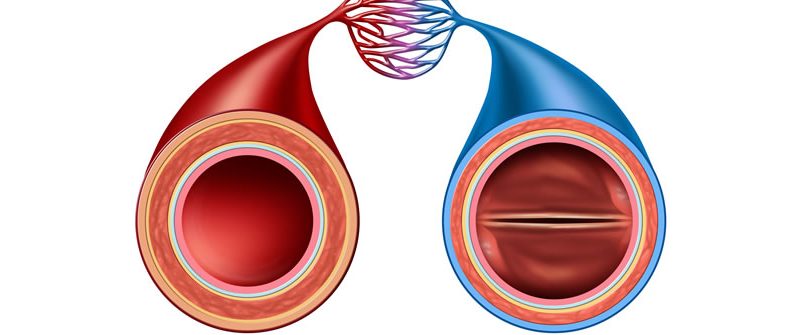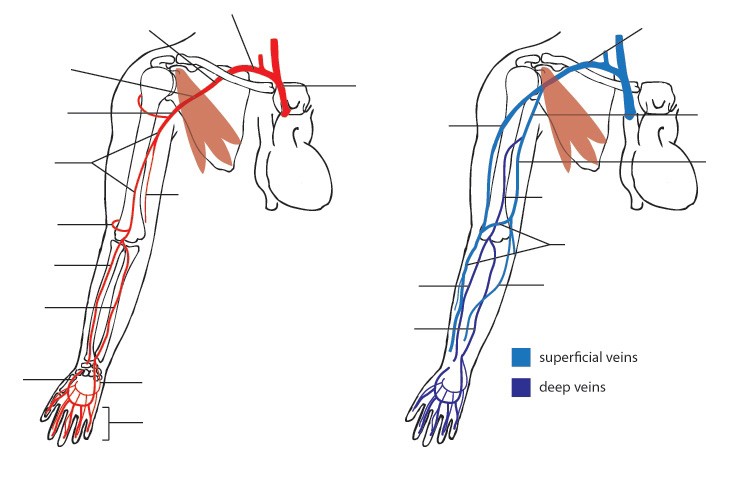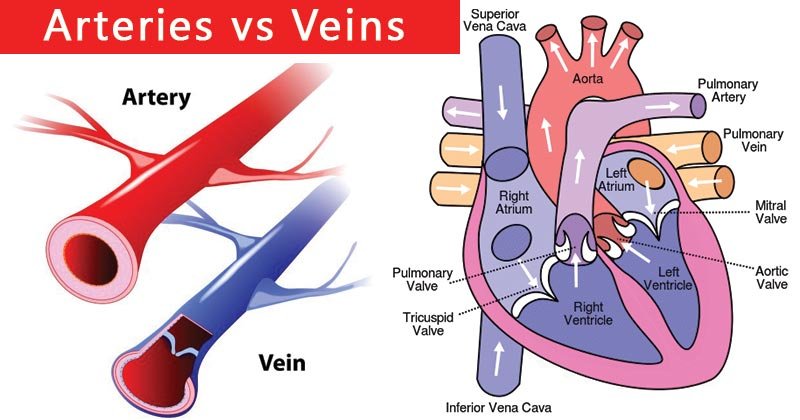Arteries and veins are a crucial part of the blood vessels. These tubes are extremely important to ensure there is a significant blood flow in the body. While these may seem to do the same thing, there is a significant difference between artery and vein.
The arteries are responsible for carrying blood from the heart to the body. On the other hand, the veins transfer blood from body parts to the heart. As a result, it can’t be denied that this is a most complex mechanism.

Table of Contents
What are the basics of blood flow?
Veins and arteries not only contribute to a balance in blood flow but also help to breathe properly. It is crucial to be familiar with the mechanism to understand the work of arteries and veins.
When we breathe, we will inhale oxygen. The body requires oxygen for a wide range of chemical reactions that help to keep you alive. If the body doesn’t get rid of carbon dioxide, a lot of complications can happen. High amounts of oxygen will eventually affect the arteries. To ensure good heart health, it is necessary to have good food habits.
The arteries and veins must be in proper condition to stimulate the blood flow. Blood rich in carbon dioxide will flow back to the heart through the veins. The heart will pump it back to the lungs. Breathing exercises will play an important role in releasing extra carbon dioxide. The cycle will keep repeating until the cycle starts again.
Do arteries and veins work together?
Although there is a difference between artery and vein, they work together to ensure a smooth flow of blood. These are connected through capillaries. The capillaries are small webs made from thin tubes that allow one side of veins to connect with arteries.

The capillaries are present in the body. Depending on the required amount of energy, the capillaries are present in a sufficient amount. Comparatively, muscles require more energy than skin. Therefore the muscles will have more capillaries than skin.
What do veins do?
The veins are responsible for carrying carbon-dioxide blood from the body back to the heart. After traveling through the body in arteries, blood will lose a significant amount of oxygen. The veins are responsible for maintaining a significant amount of blood flow in the blood.
The veins are divided into inferior and superior vena cava. The superior vena cava is responsible for carrying blood from the body’s upper part to the heart. The inferior vena cava does the same thing, but from the lower to the heart.
The veins work against gravity. However, the valves will contribute towards easing the process. The veins help the blood to flow back downwards. The muscles mostly occupy veins. Furthermore, these also help in the squeezing motion.
The squeezing motion will ensure that the veins can push blood upwards.
What do arteries do?
The arteries are responsible for carrying oxygen-rich blood from the heart to other parts of the body. As the arteries move to the body parts, they start getting divided into small parts. The largest artery in the body is known as the aorta.
The aorta is the first artery that contributes to transforming oxygen. The small arteries eventually meet in the aorta that moves to the head. The aorta also moves back to the chest and continues to the abdomen. The ending point of the aorta includes the groin.
Therefore, the arteries play an important role in ensuring there is a constant flow of blood.
What are the types of arteries?
Arteries are of different types, and each of these types has a particular coat. The coats include outer, middle, and inner. The different types of arteries include elastic arteries, arterioles, and muscular arteries.
What are the types of veins?
Unlike the arteries, veins are of four types. These include the deep veins, pulmonary veins, superficial veins, and systemic veins. Each of these veins has a specific function to serve.
The key difference between artery and vein
Despite arteries and veins being the major part of the circulatory system, there is a significant difference between the two. The vessels are the closest to the heart. They are responsible for ensuring the careful transport of blood across the heart.
They pulse together and eventually contribute to the heartbeat. Comparatively, veins need less pressure than arteries. However, they must work together against gravity. Even when we learn about the circulatory diagram, we can note down the difference between arteries and veins.

The veins are shown blue in color. Therefore, arteries have red color. Since the blood is deoxygenated, veins appear blue. The valves will contribute towards ensuring the backflow of blood. The combination of skin and deoxygenated blood will contribute towards a darker red shade. This will eventually make the veins appear blue. Hence, the veins are represented in blue color. The veins are also spotted during surgeries. In many cases, veins will appear the same as arteries.
What are the arteries and veins made of?
As stated earlier, there are three layers in arteries and veins. The inner layer is responsible for transforming the blood directly. On the other hand, the middle layer holds the blood vessels in their proper shape. Furthermore, the outer layer contributes to a stretched capacity. It will help to decide if the blood vessels will stretch or shrink. This will help to determine the difference in blood flow. It can also however lead to anxiety if not taken care of.
Blood can easily move through arteries. Comparatively, the arteries are thicker than veins. The veins are thin and will not stretch. The vein structure will ensure that the blood moves through the body for a longer time than arteries. Furthermore, it will allow constant strength.
Are there any health risks of arteries and veins?
Arteries and veins are crucial. However, they are prone to different types of health issues. Arteries can eventually lead to an artery plaque. On the other hand, one of the most common problems of veins is varicose veins.
Final Thoughts
Understanding the difference between artery and vein will help to enhance the impact. It is extremely crucial in the circulatory system. The combination of arteries and veins will ensure the proper and stable pumping of blood.





